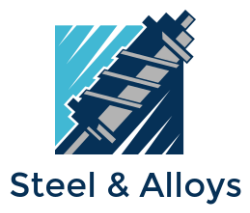EN-32B is a steel grade that finds versatile applications across various industries. In this comprehensive guide, we will delve into the specifics of this steel grade, covering its country of origin, standard and specification, chemical composition, mechanical and physical properties, equivalent grades in different international standards, common applications and uses, the heat treatment process, and size ranges and sections available.
Country, Standard, and Specification:
EN-32B steel is primarily a British steel grade. It adheres to the British Standard (BS) 970: 1955 specification, which covers a range of carbon steel and alloy steel grades. In the context of BS 970, EN-32B falls under the category of carbon manganese steel.
Chemical Composition:
EN-32B steel is characterized by a specific chemical composition to meet its mechanical and physical properties. Its key chemical components include:
- Carbon (C): 0.16% - 0.23%
- Manganese (Mn): 0.70% - 1.00%
- Silicon (Si): 0.10% - 0.40%
- Phosphorus (P): 0.050% max
- Sulfur (S): 0.050% max
Mechanical and Physical Properties:
EN-32B offers a balanced combination of mechanical and physical properties, making it suitable for a wide range of applications. These properties include:
- Tensile Strength: 380 MPa (min)
- Yield Strength: 215 MPa (min)
- Elongation: 24% (min)
- Density: 7.85 g/cm³
- Young's Modulus: 210 GPa
Equivalent Steel Grades:
EN-32B can be compared to various international steel grades, allowing for cross-reference and interchangeability in different regions. Equivalent grades in various standards include:
- BS: 080M15
- AISI/SAE: 1016
- DIN: C22E
- Werkstoff No: 1.1151
- AFNOR: XC18
- JIS: S20C
- IS: C20
- GOST: 20
Applications and Uses:
EN-32B steel is widely employed in the manufacturing industry due to its well-balanced properties. Some common applications and uses include:
1. Automotive components like crankshafts and gears.
2. General engineering components.
3. Fasteners and studs.
4. Construction and architectural elements.
5. Shafts and axles.
Heat Treatment Process:
EN-32B steel can be heat-treated to achieve desired properties. Typical heat treatment processes include:
1. Normalizing: Heating to 870°C - 910°C and air-cooling for improved machinability.
2. Annealing: Heating to 680°C - 710°C and slow cooling in a furnace for stress relief and softening.
3. Hardening: Heat to 830°C - 860°C, followed by quenching in water or oil for increased hardness and wear resistance.
Size Ranges and Sections:
EN-32B steel is available in various sizes and sections to meet different industrial needs. Common forms include:
1. Rounds: Diameter ranging from 5mm to 450mm.
2. Squares: Size from 5mm to 300mm.
3. Flats: Widths from 10mm to 300mm, thickness from 3mm to 100mm.
4. Hexagons: Across flats from 8mm to 100mm.
Conclusion:
EN-32B steel, governed by the British Standard 970, is a versatile carbon manganese steel with balanced properties. Its chemical composition, mechanical and physical properties, and equivalents in other international standards make it an attractive choice for a wide range of applications. The ability to undergo various heat treatment processes further enhances its usability, and it is available in an array of sizes and sections to cater to diverse industrial requirements. Whether in automotive, engineering, or construction, EN-32B is a reliable material for achieving robust and high-quality results.
